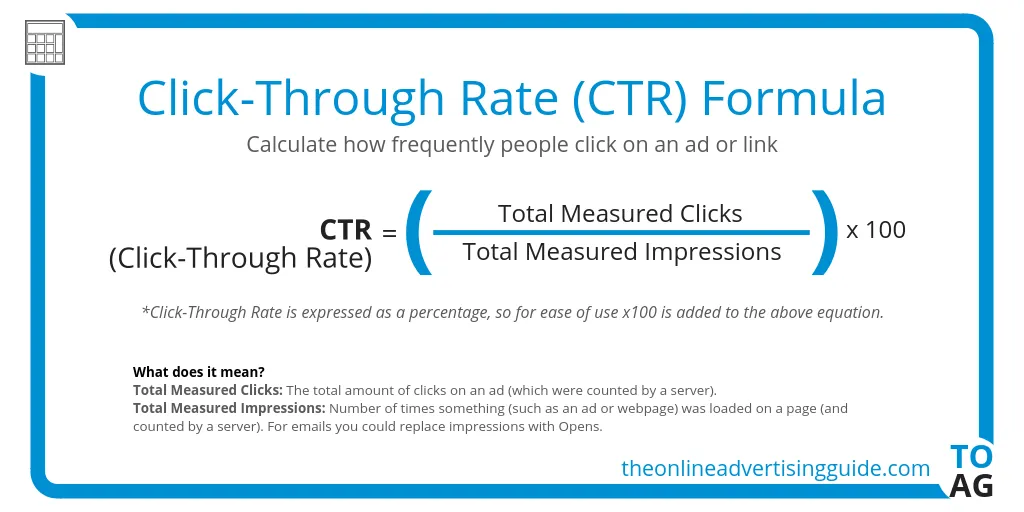Unleashing the Power of Click Marketing As PPC, CPC, and CTR

In today’s digital landscape, where online visibility and customer engagement play pivotal roles in business success, marketers are constantly seeking effective strategies to drive targeted traffic to their websites.
Click marketing, also known as pay-per-click (PPC) advertising, has emerged as a powerful tool in this endeavor, as one of the best proven digital marketing strategies.
By leveraging metrics such as cost-per-click (CPC) and click-through rate (CTR), businesses can create highly targeted campaigns that generate quality leads, increase conversions, and maximize return on investment (ROI).
In this article, we will look into details of click marketing, exploring its various components and shedding light on how to optimize its key performance indicators (KPIs) to drive business growth.
Understanding Click Marketing
Click marketing, at its core, is a form of online advertising where advertisers pay a fee each time their ad is clicked by a user.
The most common platform for click marketing is search engine advertising, with Google Ads being the dominant player. However, social media platforms like Facebook, Instagram, and LinkedIn also offer robust click marketing opportunities.
When we talk about ‘click’, it shows the action and reaction of an interactive act in technology, applied to your computer and smartphone. The usage of technology to do marketing activities is called Digital Marketing.
In the world of marketing, there are some well-known terms that define click marketing, named PPC, CPC, and CTR. Although all terms sound similar, they actually are different and in need to complement each other.
Also read: 3 Marketing Lessons Squid Game Can Teach Us

PPC (Pay-per-click)
Pay-per-click advertising allows businesses to bid on keywords relevant to their products or services. Advertisers create text or display ads, which are then displayed to users when they search for those specific keywords. Advertisers are only charged when a user clicks on their ad.
So, everytime your ads is clicked, you are paying for that visit. In order to attract visit, you need to plan a digital marketing strategy.
In order for your ads to be clicked, you ads need to appear in certain keywords focus. Also, this marketing activity is related to Google Ads. You can use ads in the form of keyword search, text, images, or videos.

Do Facebook Ads included?
As long as you set your Facebook Pixel, you could also track the impression and clicked ads. With Facebook Ads, you could also put your ads across Meta, including Instagram.
Beside Google and Meta, every social media has their own ads system and manager. The example is Twitter and LinkedIn. Not only social media management can help you boost your company, social media ads also impacting.
CPC (Cost-per-click)
Cost-per-click is the amount an advertiser pays for each click on their ad. CPC varies depending on factors such as keyword competitiveness, quality score, and bidding strategy. A lower CPC can lead to more cost-effective campaigns and a higher ROI.
To calculate how much each click costs, cost-per-click can be measured by total amount spent (how much money you spend) divided by total measured clicks.
CTR (Click-through rate)
Click-through rate measures the percentage of users who click on an ad after seeing it. It is calculated by dividing the number of clicks by the number of impressions.
A higher CTR indicates ad relevancy and can improve quality scores, resulting in lower CPC and better ad placements.
Benefits of Click Marketing
Click marketing offers numerous benefits for businesses looking to expand their online presence and drive meaningful results. Here are some key advantages:
- Targeted Advertising
Click marketing allows businesses to target specific audiences based on factors such as demographics, location, interests, and search intent.
This targeting precision ensures that ads are shown to the right people at the right time, increasing the likelihood of conversions. - Immediate Visibility
Unlike organic search engine optimization (SEO), which takes time to generate results, click marketing provides instant visibility on search engine results pages (SERPs) and social media feeds.
Businesses can quickly reach their target audience and gain exposure without waiting for their website to climb the organic rankings.
If you worry enough regarding the money, you could use free SEO tools to improve your digital marketing faster. - Measurable Results
One of the greatest strengths of click marketing is its ability to provide detailed metrics and data.
Advertisers can track clicks, impressions, CTR, conversion rates, and other key performance indicators. This data allows businesses to make informed decisions, optimize their campaigns, and improve ROI. - Cost Control
Click marketing provides businesses with full control over their advertising budgets. Advertisers can set daily or monthly spending limits, bid amounts, and adjust their campaigns based on real-time data and performance.
This flexibility ensures that businesses can allocate their resources efficiently and effectively. - Brand Exposure
Click marketing not only drives direct response and conversions but also enhances brand visibility.
Consistently appearing in relevant search results and social media feeds creates brand awareness and familiarity among target audiences, leading to increased trust and potential future conversions.
Also Read: How to Choose the Most Suitable Digital Marketing Agency

Maximizing Click Marketing Success
Doing digital marketing activities need to be effective, moreover click marketing that requires a budget to operate the ads.
To achieve optimal results from click marketing campaigns, it is essential to implement strategies that maximize the effectiveness of PPC, CPC, and CTR. Here are some actionable tips:
- Keyword Research
Thorough keyword research is the foundation of successful click marketing. Identify relevant, high-volume keywords that align with your target audience’s search intent. Use keyword research tools and competitor analysis to uncover valuable opportunities. - Ad Copy and Landing Pages
Craft compelling ad copy that highlights unique selling points, addresses pain points, and includes strong calls-to-action (CTAs). Optimize landing pages to provide a seamless user experience, align with the ad’s messaging, and encourage conversions. - A/B Testing
Continuously test different ad variations, including headlines, copy, images, and CTAs, to identify the highest performing elements. A/B testing allows you to refine your campaigns, improve CTR, and increase conversion rates. - Quality Score Optimization
Improve your ads’ quality scores by enhancing keyword relevance, optimizing landing pages, and increasing CTR. A higher quality score leads to better ad rankings, lower CPC, and improved campaign performance. - Ad Extensions
Utilize ad extensions such as site links, call extensions, and structured snippets to provide additional information and improve ad visibility. Ad extensions increase the chances of attracting clicks and enhancing user experience. - Conversion Tracking
Implement conversion tracking to measure the effectiveness of your campaigns and attribute conversions to specific keywords and ads.
Conversion tracking helps you identify successful campaigns, optimize bidding strategies, and allocate resources more efficiently. - Ongoing Campaign Optimization
Regularly monitor campaign performance, analyze data, and make necessary adjustments. Optimize bids, adjust targeting settings, pause underperforming ads, and allocate budget to top-performing campaigns to continuously improve results.
Conclusion
Don’t put so much pressure on digital marketing, because in order your ads to be clicked, you also need to plan the content. You need to find and create trending content by researching.
Click marketing, with its emphasis on PPC, CPC, and CTR, has revolutionized digital advertising. By leveraging the power of targeted advertising, real-time data, and measurable results, businesses can drive quality traffic, increase conversions, and boost their online presence.
However, success in click marketing requires strategic planning, continuous optimization, and a thorough understanding of the metrics that drive performance.
By implementing the tips and strategies outlined in this article, businesses can unlock the full potential of click marketing and achieve their marketing goals.
Do you want to learn more about click marketing? Contact us to schedule a free consultation session!
Also read: Top 10 Skills Required for Digital Marketing Career



